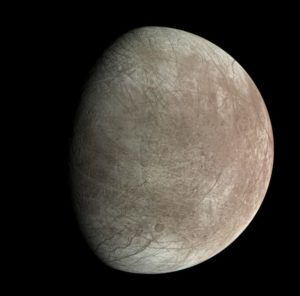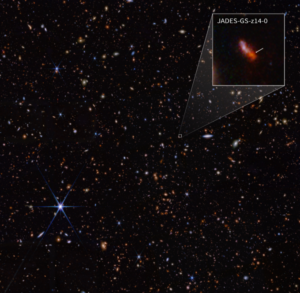Three months, six sparkling pieces of news we singled out. To put some order in this beautiful chaos, let’s look at them from the one closest to Earth and going further out.
🌒
The one closest to Earth is easy to spot, as it took place some hundred metres beneath its surface: The two largest experiments at the Large Hadron Collider, going by ATLAS and CMS, combined their analyses to calculate the mass of the top quark, improving by 31% on the previously obtained precision.
The top is an iconic particle, as it was the last quark to be experimentally discovered, and it’s the heaviest elementary particle by far. And if you must know, its mass now is 172.52±0.33GeV.
🌓
In May Earth was hit by the strongest solar storm in twenty years. It was the result of magnetic activity in a group of sunspots large as 16 Earths. By “solar storms” we talk about disturbances in Earth’s upper atmosphere and magnetic field — which in turn give rise to disruptions in radio communications, power grids, GPS operations and a few other such. They also give rise to strong auroras and this specific solar storm did offer auroras as far away from the poles as Austria and California, while its disruptions included tractors running in circles because of GPS failures.
🌔
Chang’e-6, China’s latest lunar mission, returned to Earth carrying something never seen before: soil from the dark side of the Moon.
It now remains to start seeing if, as expected, the two Moon sides have different geological histories. (Think of the Earth-facing side: smoother, protected as it is from meteorite impacts, with the far side being the opposite, with its multitude of craters big and small.)
🌕
It’s already a well-known fact that Europa, one of Jupiter’s moons, has an underground ocean double the size of all water on Earth, all covered by an icy crust.
Now we know that the crust is actually floating freely on top of that water.

[NASA/JPL-Caltech/SwRI/MSSS, Björn Jónsson]
The proof? NASA’s Juno, Jupiter’s artificial satellite, saw the crust changing position, in a small but intriguing instance of planetary exploration.
🌖
The James Webb Space Telescope is at it again. And by “it” we mean smashing current notions of how things were done in the early universe. After detecting, two years ago, the faint light of many galaxies that apparently formed well less than one billion years after the big bang (read: too early), it now found one that outdoes them.

[NASA, ESA, CSA, STScI, B. Robertson (UC Santa Cruz), B. Johnson (CfA), S. Tacchella (Cambridge), P. Cargile (CfA)]
The light from JADES-GS-z14-o traveled from a distance that puts its creation to less than 300 million years after the start of time. Furthermore, its mass seems to be some hundreds of million solar masses, making it an improbably large galaxy forming improbably quickly.
🌗
If there ever was a “last but not least” item in a list, it’s this one. The DESI collaboration of astrophysicists made the largest 3D map of the universe so far, with tens of millions galaxies. (Older DESI vid here.)
The mapping used one year’s worth of data from the Kitt Peak telescope in Arizona, as part of an effort to understand the expansion of the universe. Not bad for an animal species which hasn’t figured out how to distribute wealth yet.
—
Do you want to receive one monthly reminder with links to the Ph-word posts? Join the mailing list.
